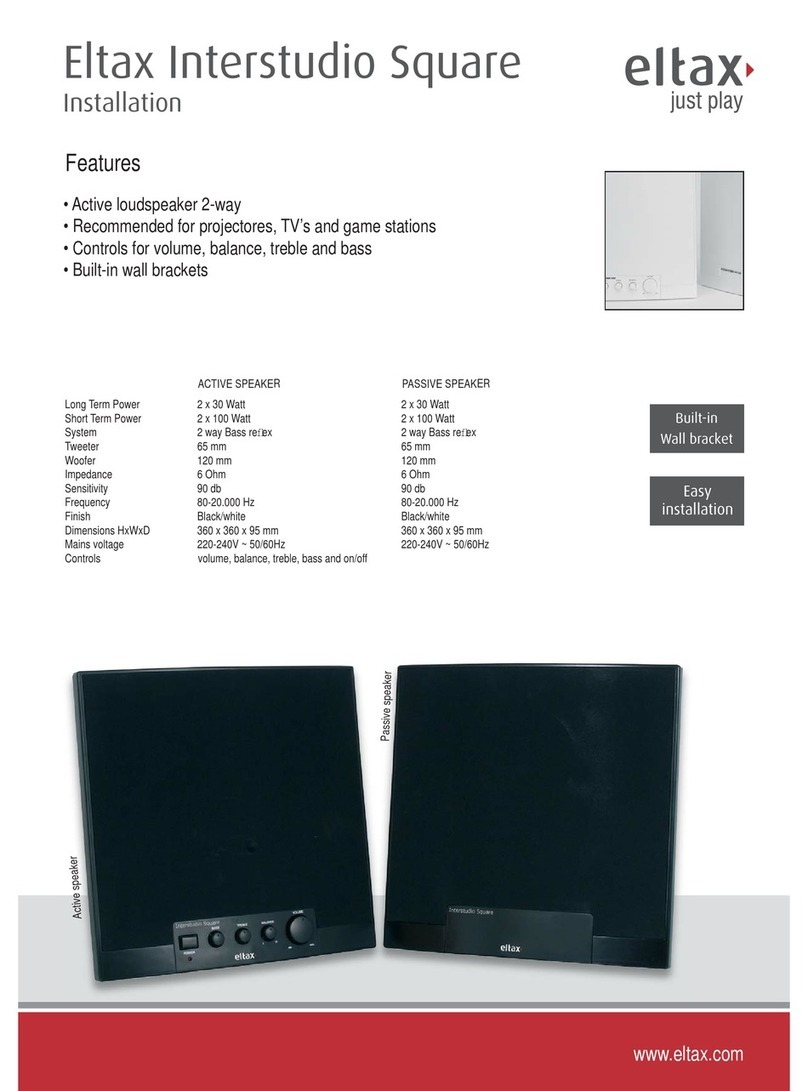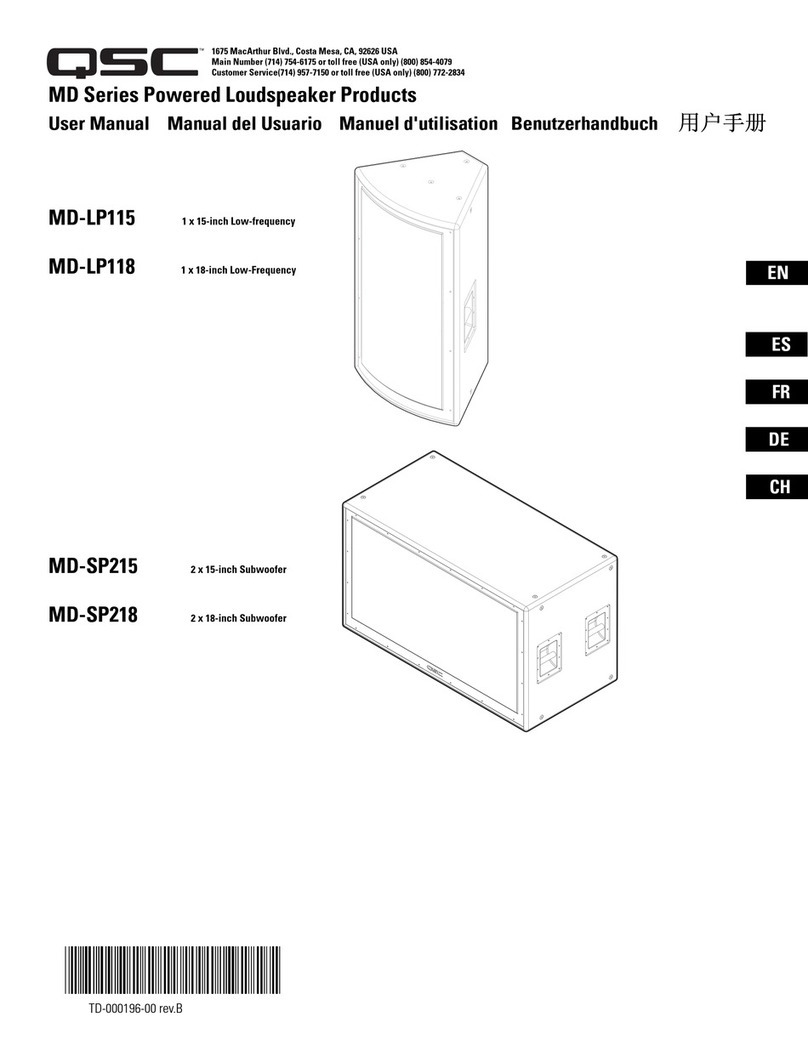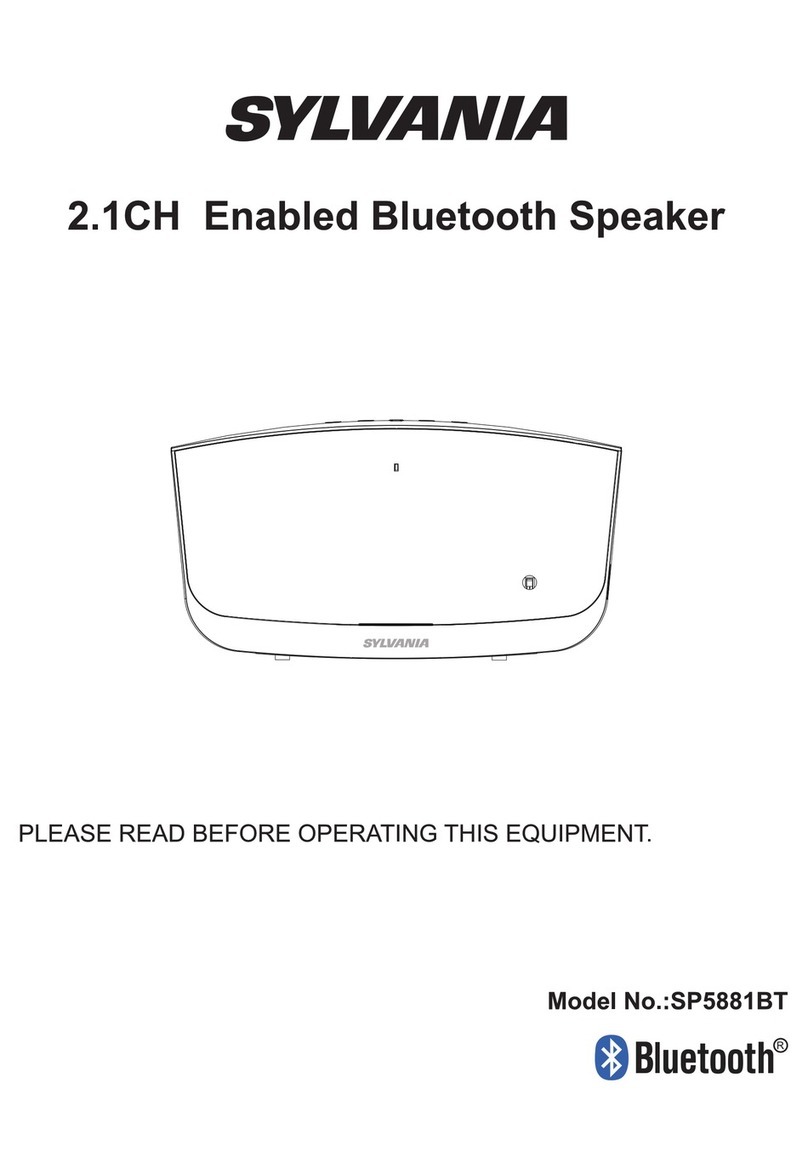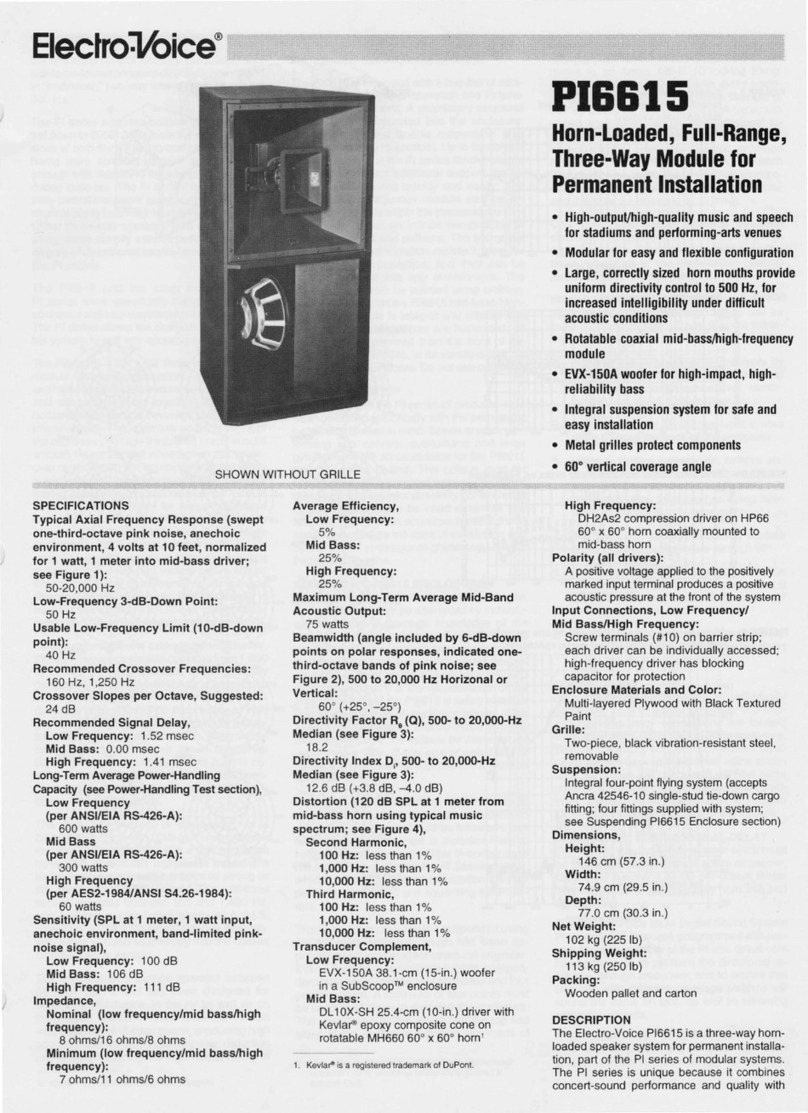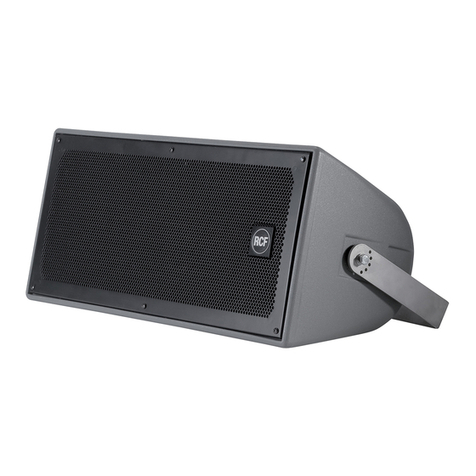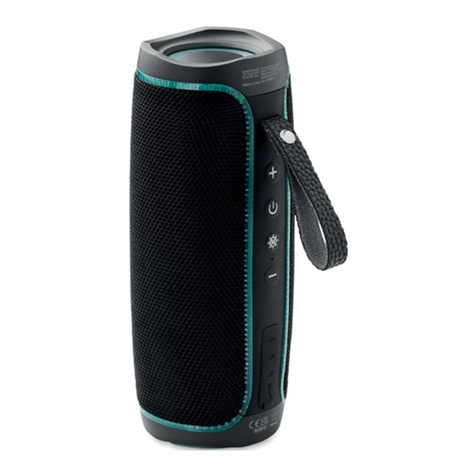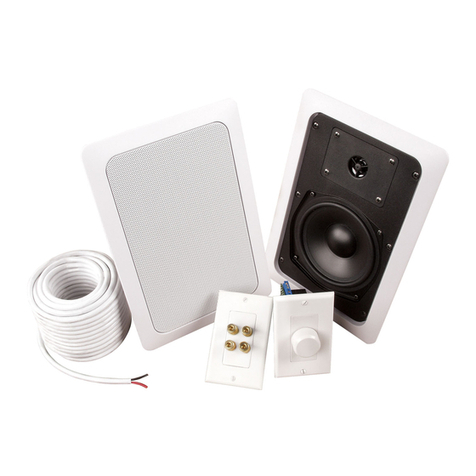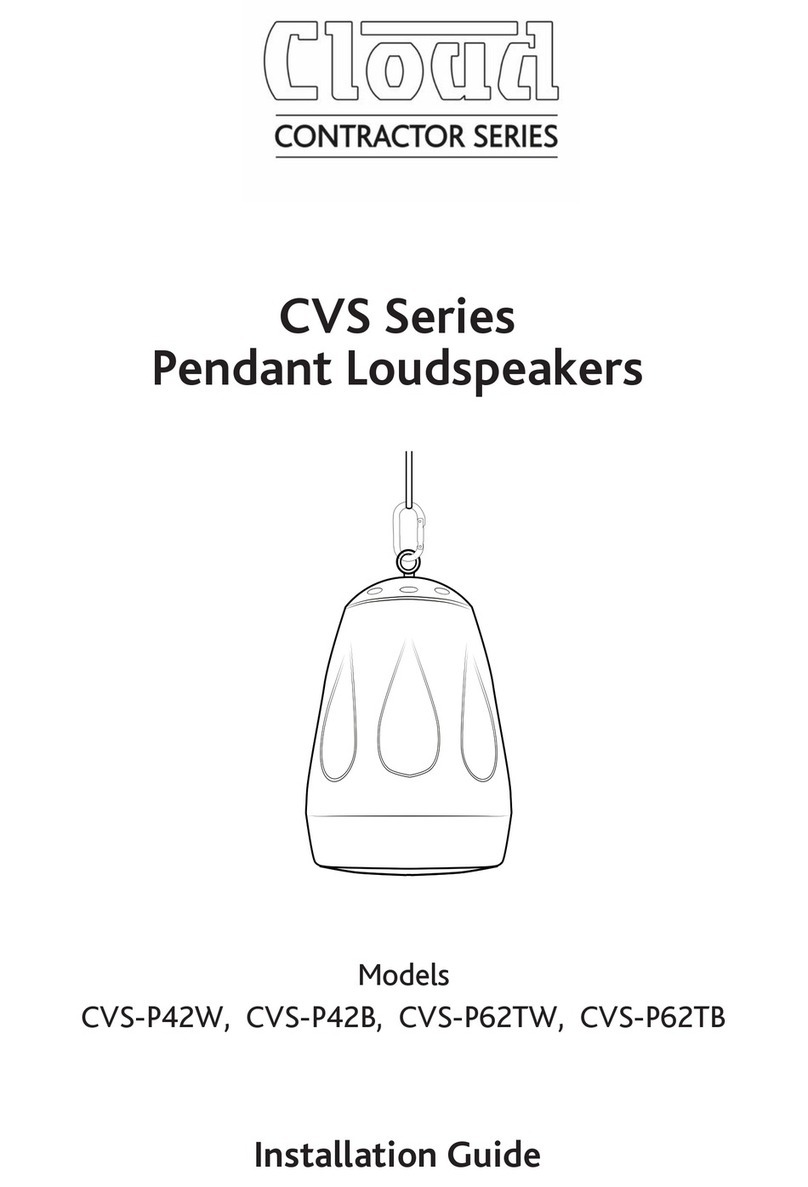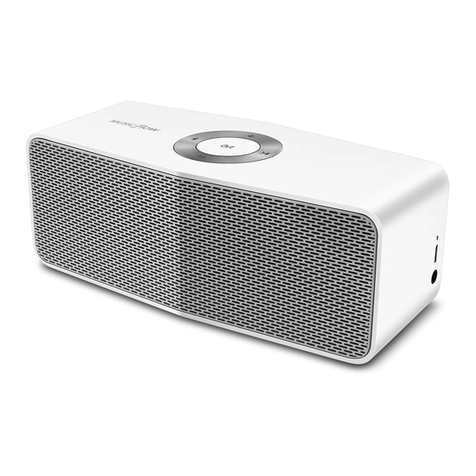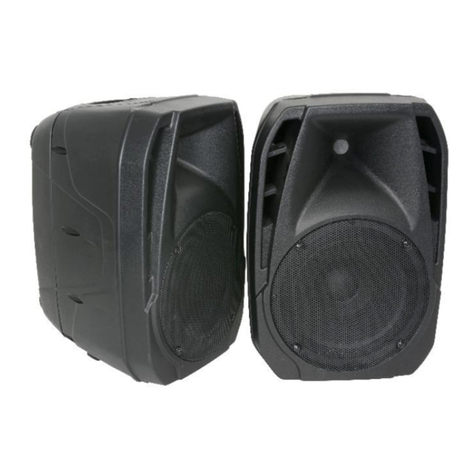EPOS Elan 35 User manual

User Manual
Designed and engineered in the U.K.
EPOS LIMITED
12 Avebury Court Mark Road
Hemel Hempstead Herts HP2 7TA
England
Telephone: +44 1442 260146 Fax: +44 870 622 0846
E-mail: inf[email protected]
www.epos-acoustics.com

This booklet contains information on the Elan series loudspeaker range.
UNPACKING
While unpacking, please take care to locate the internal cartons containing the cloth-covered grilles and
retain them in a safe place. It is advisable to retain all the packaging materials, in case your speakers ever
need to be transported.
CABLE TERMINATIONS
A set of 4mm plugs is supplied which will allow you to terminate your loudspeaker cables. These plugs
have been selected to provide the best possible electrical connection.
To terminate your speaker cables, remove just enough insulation for the bare wire end to fit into the
metal end of the plug (no more than about 5mm or 3/16”). Gently twist the cut ends of muti-strand wires
to keep them together, and then insert the bare end into the hole. If necessary, trim only the outer part of
the cable insulation to allow it to fit into the insulating plug shroud and allow the wire to reach fully into
the hole.
Next make a secure electrical connection by tightening the screw on to the bare end of the cable. Ensure
the red plugs are fitted to both ends of the positive or + conductor and the black plugs are fitted to both
ends of the negative or – conductor. If you are in doubt consult your Epos dealer.
Residents of the European Union may wish to use bare wires into the terminal posts, as 4mm plugs have
been outlawed. If bare wires are used, take care to avoid stray strands which can short-circuit the power
amplifier, by twisting the ends together beforehand. Spade type connectors may also be used. Keep any
unused plugs safely out of reach of young children.
WARNING
The 4mm plugs used on modern hi-fi speaker cables should never be inserted into European mains
sockets even though they may fit. Needless to say, this is pointless and can be fatal if tried. Make sure that
young members of the family are prevented from ever doing this.
CONNECTIONS
Warning: Ensure that your amplifier is switched off before you make, break, or change any connections,
as damage may occur to your amplifier if speaker cables are shorted. Speakers can be damaged by
excessive inputs.
Always lower the volume before turning on the amplifier, or making any adjustments to the system (e.g.
switching amplifier inputs, or raising or lowering a pickup arm, or turning on a pre-amp or any other
source component).
CONNECTIONS TO THE AMPLIFIER
Your Epos loudspeakers are equipped with insulated binding posts with excellent electrical contact and
current specification. The posts are connected to the individual drivers as denoted on the rear terminal
panel. Removable metal links enable the loudspeaker to be conventionally wired with a single cable,
bi-wired or bi-amped. These techniques often bring benefits in terms of increased clarity and definition.
If you are in any doubt consult your dealer or visit www.epos-acoustics.com
The sockets on the loudspeaker marked red (+, or positive) on the right side as you look at the
loudspeaker rear panel, must be connected to the red ( +, or positive) output terminals on your amplifier,
while the sockets marked black ( -, or negative) must be connected to the black ( -, or negative) output
terminals on your amplifier. Repeat connections for the right channel. Use good quality cable to connect
your loudspeakers to the amplifier. Ensure that the cables from each speaker are of roughly equal length
and that any surplus is gathered in a loose hank. Do not coil the surplus tightly.
E&OE
Page Two

For conventional wiring, leave the metal links in place as factory fitted. If you wish to bi-wire or bi-amp
your loudspeakers, please read the sections which cover these in detail.
Once all speaker and signal cable connections have been made, switch the amplifier on with the volume
turned down low. Check that the bass and treble sounds come from both speakers. If not, switch off and
remake the connections.
PHASE
If the cables are not connected to each left and right speaker in the same way, i.e. black and red are
reversed in one, the effect will be incorrect phasing. This will cause the bass to disappear and the stereo
image to move away from the middle to a position outside the two speakers. Correctly wiring the polarity
of the speakers will restore the image to between the speakers and provide proper bass. Most speaker
cables have a polarising mark, such as a raised bump or writing on the positive wire.
BI-WIRING AND/OR BI-AMPING
Bi-wiring involves the use of two pairs of speaker cables between your loudspeakers and amplifier. Bi-
amping involves the use of two pairs of speaker cables between your loudspeakers and two stereo
amplifiers.
If you wish to bi-wire or bi-amp your Elan speakers, it is essential that you first unscrew all the binding
posts and remove the metal links that join them together. Store them safely for possible future use. Once
the links are removed, the drive units will be electrically separate and should be connected to the driving
amplifier with individual high-quality cables, as shown.
STANDS AND SPIKES
For loudspeakers designed for use on stands, best results will be obtained if the stands are rigidly coupled
to the floor using carpet-piercing spikes. This will help preserve the outstanding mid-band clarity which is
a hallmark of Epos loudspeakers. Epos has designed its own spiked stands for the stand-mount models.
The floor-standing models are supplied with their own support plinth and spikes.
Four threaded spikes are provided with each floor-standing speaker, together with individual locking
nuts. These should be screwed into the metal inserts in the bottom of the plinth. Once these are adjusted
to correct the level of the speaker and stop it from rocking, tighten the locking nuts, so as to prevent the
spikes from coming loose. Adjusting the front spikes higher will tip the speaker up and can give sonic
benefits.
POSITIONING AND FINE TUNING
Epos loudspeakers are designed to be positioned as specified. Space should be left behind the
loudspeakers to allow proper operation of rear-firing reflex ports and to ensure establishment of good
stereo image depth. Some experimentation may be necessary to establish the ideal position within your
listening room.
Each pair of floor-standing speakers is supplied with reticulated foam plugs already in the ports. The foam
has been designed to reduce the amount of bass if required, while still allowing bass output from the port
and improving the loudspeaker's power handling.
E&OE Page Three
Use links Remove links
Remove links
Single wire Bi-wire Bi-amp

For best bass power and musical dynamics, the foam plugs should be removed from the ports and
retained. Begin listening tests by placing the loudspeakers about 20cm from the rear wall and at least
40cm of space between each loudspeaker and the nearest side wall. Gradually move them out a little at a
time until you achieve the best balance between bass weight and definition.
Some rooms and speaker positions can boost the bass too much. If the bass in your room is too powerful,
despite trying various speaker positions, we suggest that you try re-inserting the foam.
Position the outer surface of the foam near where the straight port joins the outer flare. (If pushed in too
far, it could be lost inside the cabinet). If the bass reduction is beneficial, but too great, try cutting the
foam across the diameter, about 1/3 of the way from one end. In this way, you can experiment with
either no foam damping, 1/3, 2/3 or the whole length (both parts together) until you find the length of
foam that best suits your room. Keep the total foam length the same in both the left and right hand
speakers.
The optimum stereo performance will be achieved when the speakers are positioned 2 metres or more
from the listener and about the same distance from one another. Turning the speakers in very slightly
towards the listener often helps to stabilize the stereo image.
All Epos Elan loudspeakers have been designed to produce a broad listening area. However, the optimum
sound balance and stereo image will be enjoyed if your ear level, when seated for listening, falls roughly
in line with, or just below, the tweeter. If you can just see the top of the speaker, that will be fine. If,
however, the ideal is not attainable or convenient, listening beyond this range will also be enjoyable.
Remember, there is no absolute right or wrong - if it sounds good, it is good.
PROTECTIVE GRILLES
Young children and pets have an affinity for tweeter domes and woofer cones! Also take special care
when lifting the speakers not to poke your fingers into the tweeter opening. If the soft tweeter dome is
pushed in it should return to its original shape and not affect sound quality, but such rough treatment is
not recommended. If in doubt, please contact your dealer.
Your Elan loudspeakers are supplied with removable 'audiophile' baffles, which have no grille cloth. For
extra drive unit protection, Epos has also supplied optional cloth-covered grilles, packed separately in
the main carton. If you wish to use the protective grilles instead, first remove each plain-painted front
baffle, by gripping near the small gap between it and the veneered cabinet. Do not insert any tools into
the gap to lever it off. There is no need to, and it could damage your speakers! Each front should come off
quite easily, with some gentle easing all around, using your finger tips.
To fit the cloth-covered grille, hold it with the Epos badge at the bottom and position the smaller of the
two holes carefully over and around the tweeter, locate the metal pegs into the rubber sockets and gently
push the grille on to the cabinet, evenly all around, until it is fully in place. Please note, unlike most
loudspeakers, all the Elan models have been designed to sound much better when used with the grille or
plain front baffle. So if you wish to enjoy them at their very best, please ensure either the plain or cloth
baffle are in place: do not use with either removed.
RUNNING IN
Epos loudspeakers require a little gentle use to allow their working components to settle into their
proper working condition. Do not be concerned if your new speakers sound aggressive and lacking in low-
frequency authority when you first begin to use them. Things will quickly improve. Allow between 24 and
48 hours of normal use before your new loudspeakers can be expected to perform at their best.
Page Four E&OE

POWER REQUIREMENTS
Amplifiers with power outputs between those noted in the loudspeaker specifications will generally be
adequate, although more powerful amplifiers could be used if care is taken to avoid over-driving the
loudspeakers.
Always use the volume control with discretion, and reduce the level immediately should the
loudspeakers begin to distort, or your ears hurt.
Power requirements depend ultimately on listening distance, room acoustics, room size, number of
speakers and speaker placement relative to room boundaries. Smaller, less sensitive loudspeakers
require more power than larger, more sensitive models. For instance, for listening at 2m (6 1/2’)
distance from the speakers in a 35 cubic metre (1,225 cubic feet) domestic room, a pair of Elan 10s might
need about 25W per channel to achieve 100dB SPL, (sound pressure level) whereas the Elan 35s would
only need only 10W for the same SPL. The maximum SPL level achievable by the audio system will
therefore be set by the maximum available amplifier power and the loudspeaker sensitivity. That is why
larger, more sensitive loudspeakers are better suited to larger rooms.
So, as a rough guide, the minimum amplifier power we recommend varies from 25W into 4 ohms for the
Elan 10, to 10W into 4 ohms for the Elan 35 (please see the individual specifications).
Although 100dB SPL maximums are very loud, these would occur only during the very loudest moments.
The average SPL could be around 9-14db lower, depending on the style of music. Using amplifiers of
lower power than recommended is best avoided because they will restrict the dynamic range. Such
amplifiers may also cause damage to the loudspeakers if they are driven beyond their capability in an
attempt to obtain high volume levels.
This is because the clipping distortion produced when an amplifier is driven beyond its normal output
capability can be very destructive. A powerful amplifier operating well inside its capability will generally
be less likely to damage your loudspeakers than a lower powered amplifier operating beyond its
capacity. (Please note also, that some amplifiers will deliver more than their continuously rated RMS
power for short periods, enabling higher maximum SPLs to be achieved in practice).
For example, in a 35 cubic metre room, at 2m listening distance, with the amplifier reaching maximums
of 100W per channel and playing highly compressed pop music, a pair of Elan 10 speakers could deliver
maximum SPLs of 106dB and average levels of 97dB. With classical music, the average level could be
much lower, around 92dB. For a pair of Elan 35s with the amplifier reaching 200W per channel, you could
add up to 7dB to those figures (at 113dB SPL maximum, with averages of 104dB pop and 99dB classical).
Please refer to the SPL vs. Amplifier power chart on page six. The diagonal graph lines show
approximate SPLs for each Elan model over a range of power levels in a typical 35 cubic metre room at 2
metres listening distance and with loudspeakers approx 1m to 1.5m from boundaries. Note; this chart
covers just one example of listening distance, room size, speaker position and sound damping (for RMS
amplifier power into 4 ohms per channel).
There will be a wide variation in SPLs in other situations.
Smaller sparsely furnished rooms, closer listening, and loudspeaker to room boundary distances
produce higher SPLs, (or require less power to produce the same SPL). In such cases the actual SPLs
could rise above the diagonal graph lines. Conversely, larger more heavily furnished rooms, and greater
distances between speakers and room boundaries, would reduce SPLs (or require more power to
compensate). In such cases, the actual SPLs would fall below the diagonal graph lines.
Page FiveE&OE

Page Six
LONG-TERM CARE
FINALLY
Having connected, placed, optimised and run in your loudspeakers; you can relax and simply enjoy the
music. With careful use your Epos Elan loudspeakers should give you many years of listening pleasure.
NATURAL WOOD
This product has been finished with carefully selected and book-matched real wood veneers. We select
the best and ensure they are finished to the highest practical standards. Even though Epos speakers have
hand matched veneers, no two trees are alike and each pair of speakers may be slightly different in grain,
colour and shading. These pleasing variations are your guarantee of the unique and warm charm of your
Epos Elan speakers. Each Epos cabinet is finished with a special lacquer which ensures a maintenance free
life. Furniture polish may be used to remove finger marks and dust. Do not use any kind of spirit to clean
them.
WARRANTY
Your Epos Elan series loudspeakers have been built to very high standards and should give many years of
trouble-free service. If within five years of purchase they prove to be defective for any reason other than
accident, misuse, neglect, unauthorized modification or fair wear and tear, we will repair the defect or, at
our option, replace the faulty speakers without charge for parts, labour or return carriage. Your purchase
receipt should be retained as it may be required in the event of a warranty service claim. This warranty is
applicable in the United Kingdom only and given in addition to your statutory rights.
Service enquiries in countries other than the United Kingdom should be addressed to the local Epos agent
or distributor. Warranties granted in these countries are entirely at the discretion of the agent or
distributor. Please see the Epos website for complete list of international distributors.
To maintain the appearance of your Elan loudspeakers, simply wipe the veneered and painted surfaces
with a barely damp lint-free cloth to remove any dust or finger marks. Do not use spray polishes or
cleaners on the fronts. They could damage the drive units. To dust the cloth grille, clean gently with a soft
brush. If it becomes so dirty that vacuuming is required, then firstly remove the grille from the
loudspeaker, as described above, and use reduced suction. Beware: high suction can damage drive units,
especially tweeters. If the speakers are put aside for long periods, store in a dry environment without
temperature extremes.
E&OE

Page Seven
Power Handling 100 Watts unclipped speech and music
Frequency Range 51 Hz - 25 kHz
Impedance 4 Ohm nominal
Sensitivity 89dB/2.83V@1m
Amplifier Compatibility 25 - 100 Watts
Positioning Not less than 10 cm (4”) from rear wall
Tweeter Epos 25mm soft dome with high-temperature voice coil, ferrofluid cooling and
neodymium magnet system. Magnetically shielded
Bass/Midrange Driver Epos mid bass 156mm dia., with cast chassis, 25mm high-temperature voice coil and
polypropylene cone. Magnetically shielded
Crossover Frequency 3.2kHz.
Crossover Bass and tweeter networks both use 2nd order filters. Only metal oxide resistors and
polypropylene film capacitors are used for optimum sound quality. The tweeter section
has an air-cored inductor, and the woofer section features a large-core laminated-iron
inductor for low distortion and high power handling, all to ensure the very highest sound
quality.
Terminal Panel Bi-wirable. Can be single or double wired by removing shorting links provided.
Internal wiring Solid-core copper cable.
Cabinet 18mm MDF wrap and front baffle, extensively braced internally
Finish Cherry or Black Oak real-wood veneer
Grilles Removable 'audiophile' grille fitted as standard,
Alternative cloth-covered grilles are packed as accessories
Size - HxWxD - mm / in.
Weight
Packaged One pair per carton
Grilles
310 x 185 x 245 / 12.2 x 7.2 x 9.7
6.1 kg / 13.4 lb net per single speaker
15.4 kg / 33.9 lb gross per carton
E&OE
Power Handling 120 Watts unclipped speech and music
Frequency Range 47 Hz - 25 kHz
Impedance 4 Ohm nominal
Sensitivity 90dB /2.83V@1m
Amplifier Compatibility 20 - 120 Watts
Positioning Not less than 10 cm (4”) from rear wall
Tweeter Epos 25mm soft dome with high-temperature voice coil, ferrofluid cooling and
neodymium magnet system. Magnetically shielded
Bass/Midrange Driver Epos 187mm dia., with cast chassis, 25mm high-temperature voice coil and
polypropylene cone. Magnetically shielded
Crossover Frequency 3.2kHz
Crossover Bass and tweeter networks both use 2nd order filters. Only metal oxide resistors and
polypropylene film capacitors are used for optimum sound quality. The tweeter section
has an air-cored inductor, and the woofer section features a large-core laminated-iron
inductor for low distortion and high power handling, all to ensure the very highest
sound quality.
Terminal Panel Bi-wirable. Can be single or double wired by removing shorting links provided.
Internal wiring Solid-core copper cable.
Cabinet 18mm MDF wrap and front baffle, extensively braced internally
Finish Cherry or Black Oak real-wood veneer
Grilles Removable 'audiophile' grille fitted as standard,
Alternative cloth-covered grilles are packed as accessories
Size - HxWxD - mm / in. 415 x 210 x 280 / 16.4 x 8.3 x 11
Weight 8.8 kg / 19.4 lb net per single speaker
21 kg / 46.2 lb gross per carton
Packaged One pair per carton

E&OE
Power Handling 150 Watts unclipped speech and music
Frequency Range 44 Hz - 25 kHz
Impedance 4 Ohm nominal
Sensitivity 92dB /2.83V@1m
Amplifier Compatibility 12.5 - 150 Watts
Positioning Not less than 10 cm (4”) from rear wall
Tweeter Epos 25mm soft dome with high-temperature voice coil, ferrofluid cooling and
neodymium magnet system. Magnetically shielded
Bass/and Bass/Midrange Drivers 2x Epos mid-bass 156mm dia., with cast chassis, 25mm high-temperature voice coil and
polypropylene cone
Crossover Frequencies 3.6kHz and 800Hz
Crossover Bass, mid bass and tweeter networks all use 2nd order filters. Only metal oxide resistors
and polypropylene film capacitors are used for optimum sound quality. The tweeter
section has an air-cored inductor. Both the woofer and mid-woofer sections feature
large-core laminated-iron inductors for low distortion and high power handling, to
ensure the very highest sound quality
Terminal Panel Bi-wirable. Can be single or double wired by removing shorting links provided
Internal wiring Solid–core copper cable
Cabinet 18mm MDF wrap and front baffle, extensively braced internally
Finish Cherry or Black Oak real-wood veneer.
Grilles Removable 'audiophile' grille fitted as standard
Alternative cloth-covered grilles are packed as accessories
Size - HxWxD - mm / in. 850 x 185 x 289 / 33.5 x 8.3 x 11.4 (cabinet only)
915x265x330 (inc. plinth and spikes)
Weight 16.9kg/37.2 lb net (single speaker including plinth)
15.5kg / 34.1 lb net (single speaker without plinth) 21.0kg / 46.2 lb gross per carton
Packaged One loudspeaker per carton
Power Handling 200 Watts unclipped speech and music
Frequency Range 44 Hz - 25 kHz
Impedance 4 Ohm nominal
Sensitivity 93dB /2.83V@1m
Amplifier Compatibility 10 - 200 Watts
Positioning Not less than 10 cm (4”) from rear wall
Tweeter Epos 25mm soft dome with high-temperature voice coil, ferrofluid cooling and
neodymium magnet system. Magnetically shielded
Bass/and Bass/Midrange Drivers 2x Epos 187mm dia., with cast chassis, 25mm high-temperature voice coil and
polypropylene cone
Crossover Frequencies 3.2kHz and 800Hz
nd
Crossover Bass, mid bass and tweeter networks all use 2 order filters. Only metal oxide resistors
and polypropylene film capacitors are used for optimum sound quality. The tweeter
section has an air-cored inductor. Both the woofer and mid-woofer sections feature
large-core laminated-iron inductors for low distortion and high power handling, all to
ensure the very highest sound quality
Terminal Panel Bi-wirable. Can be single or double wired by removing shorting links provided
Internal wiring Solid–core copper cable
Cabinet 18mm MDF wrap and front baffle, extensively braced internally
Finish Cherry or Black Oak real-wood veneer
Grilles Removable 'audiophile' grille fitted as standard.
Alternative cloth-covered grilles are packed as accessories.
Size - HxWxD - mm / in. 915 x 210 x 320 / 36 x 8.3 x 12.6 (cabinet only)
980x286x380 (inc. plinth and spikes)
Weight 20.8 kg / 45.8 lb net (single speaker including plinth)
19.1kg / 42 lb net (single speaker without plinth) 25.7 kg / 56.5 lb gross per carton
Packaged One loudspeaker per carton.
This manual suits for next models
3
Table of contents
Other EPOS Speakers manuals
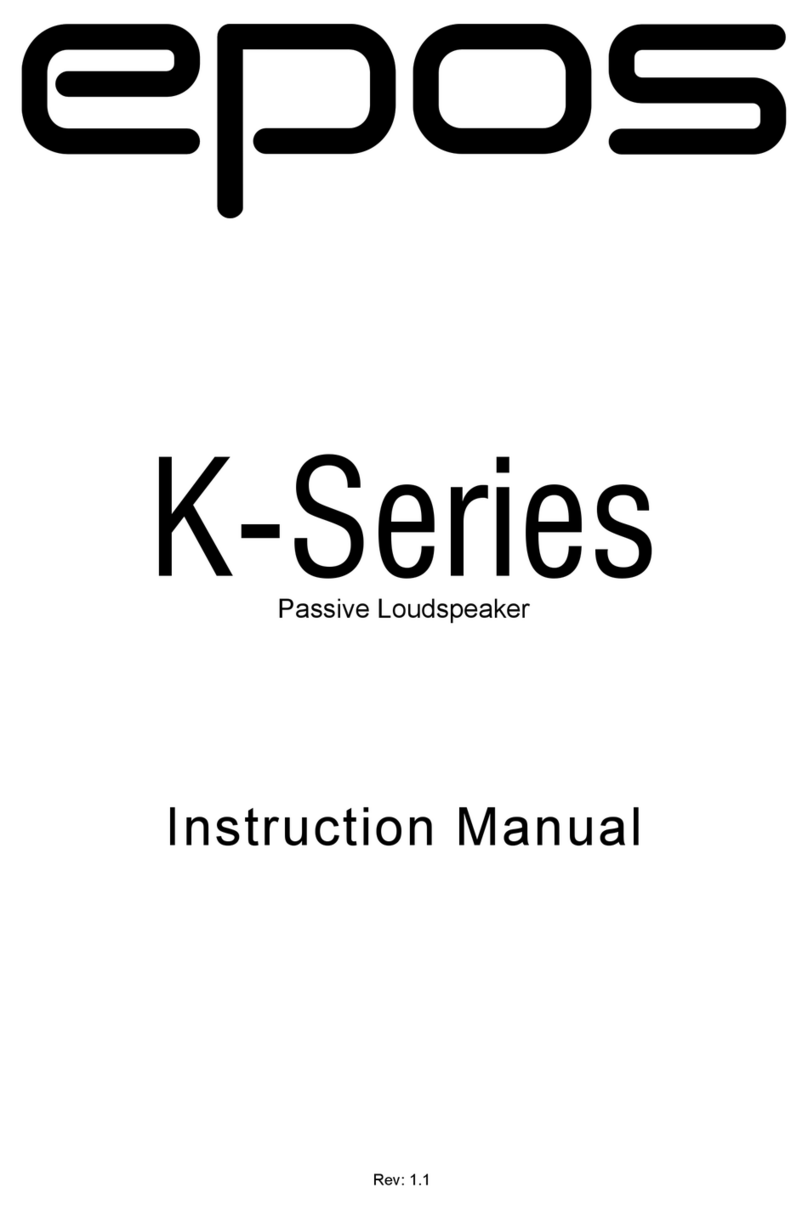
EPOS
EPOS K-Series User manual
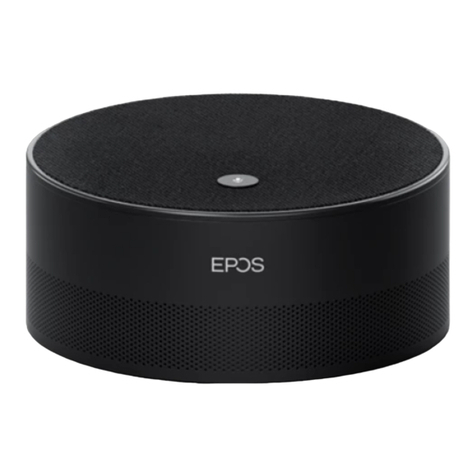
EPOS
EPOS EXPAND CAPTURE 5 User manual

EPOS
EPOS Epic 1 User manual

EPOS
EPOS M5i User manual
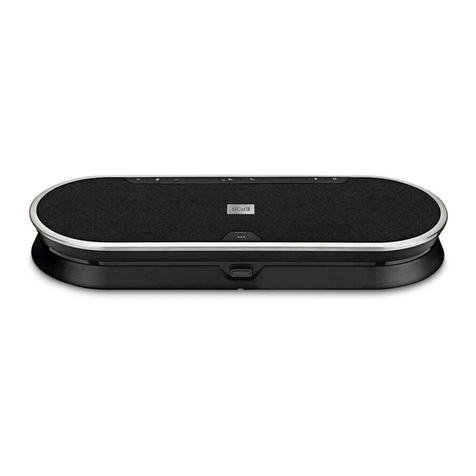
EPOS
EPOS EXPAND 80 User manual

EPOS
EPOS Mini-Monitor User manual

EPOS
EPOS ELS Series User manual
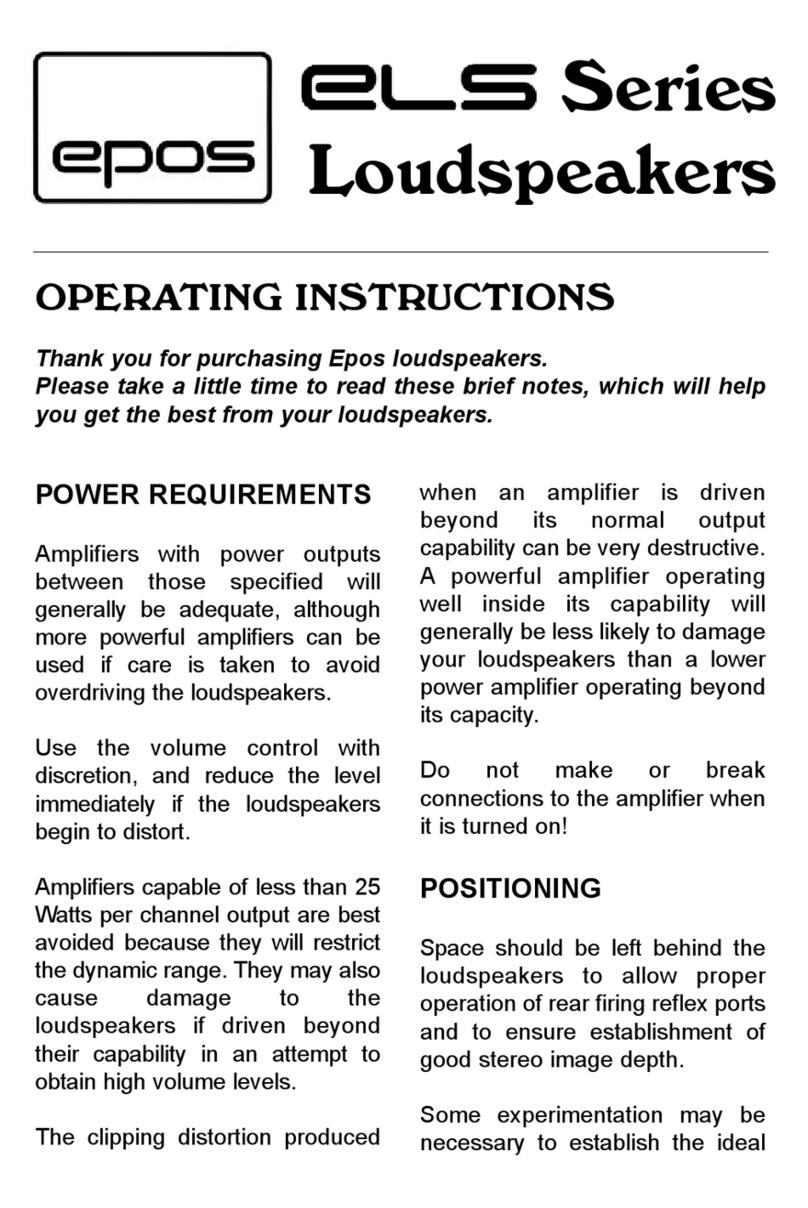
EPOS
EPOS ELS Series User manual
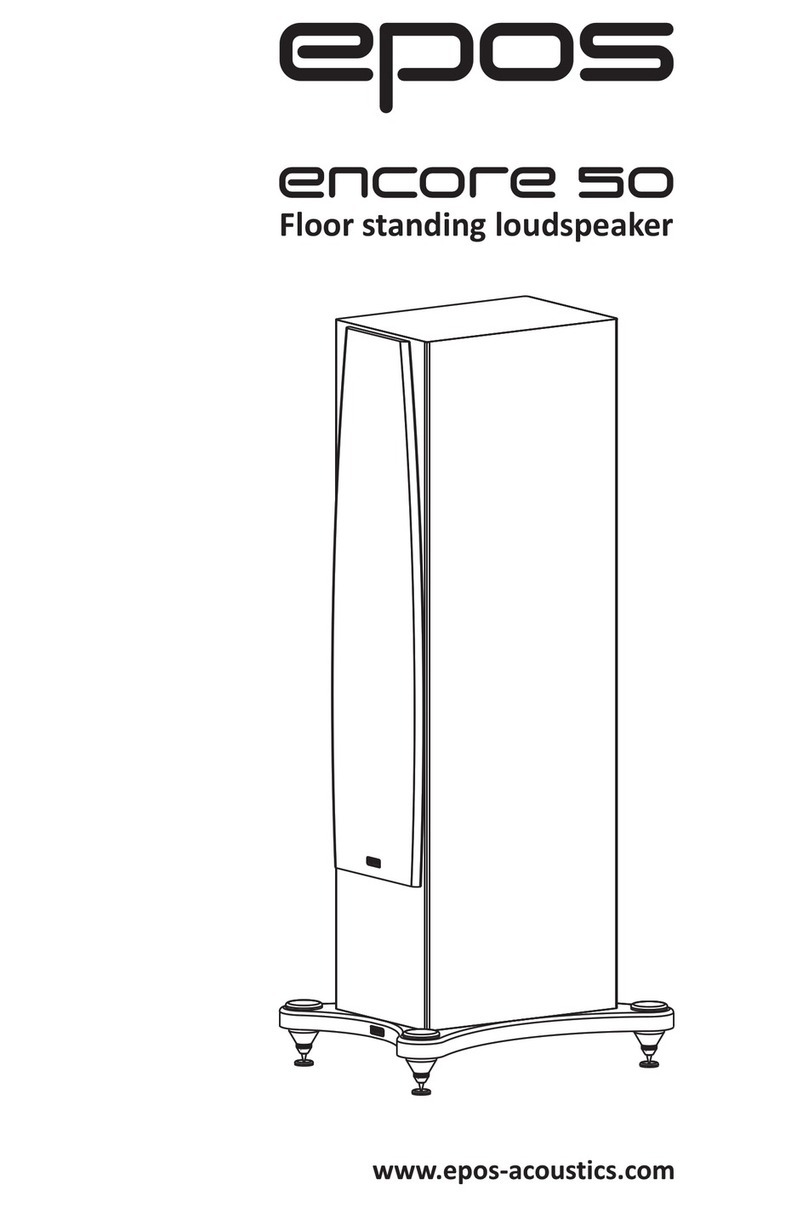
EPOS
EPOS Encore 50 User manual
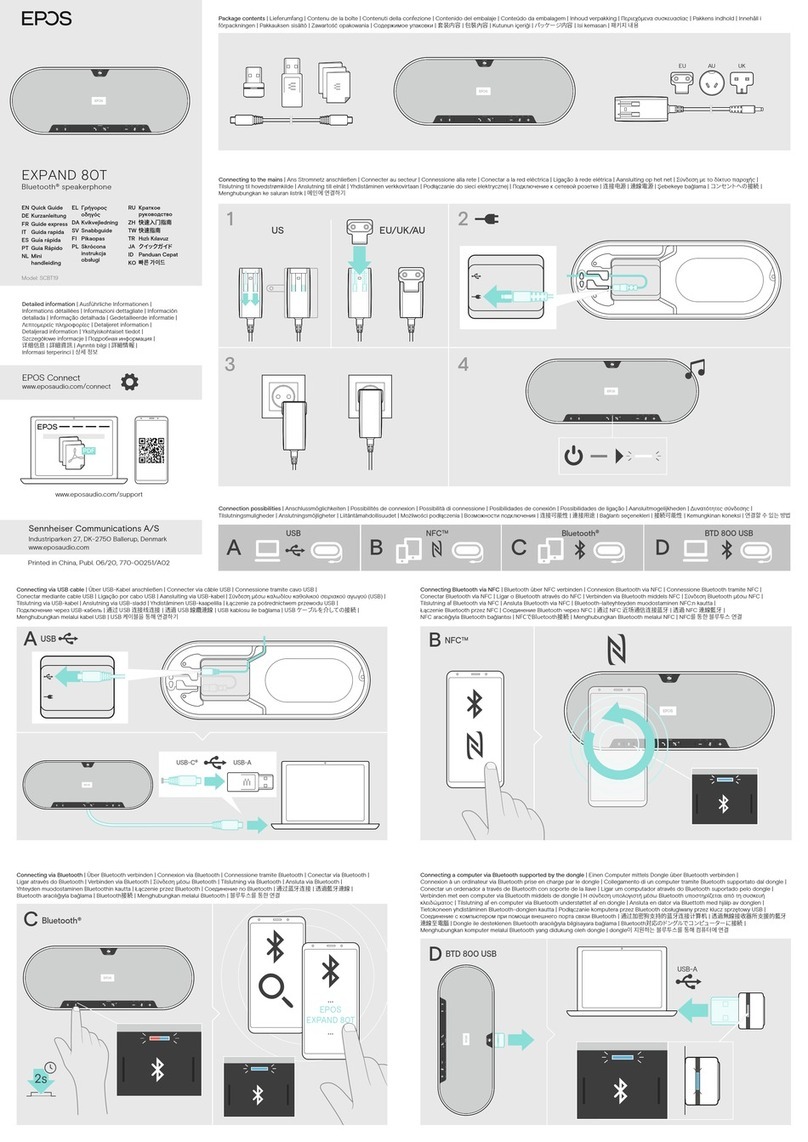
EPOS
EPOS EXPAND 80T User manual


